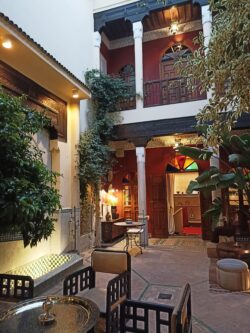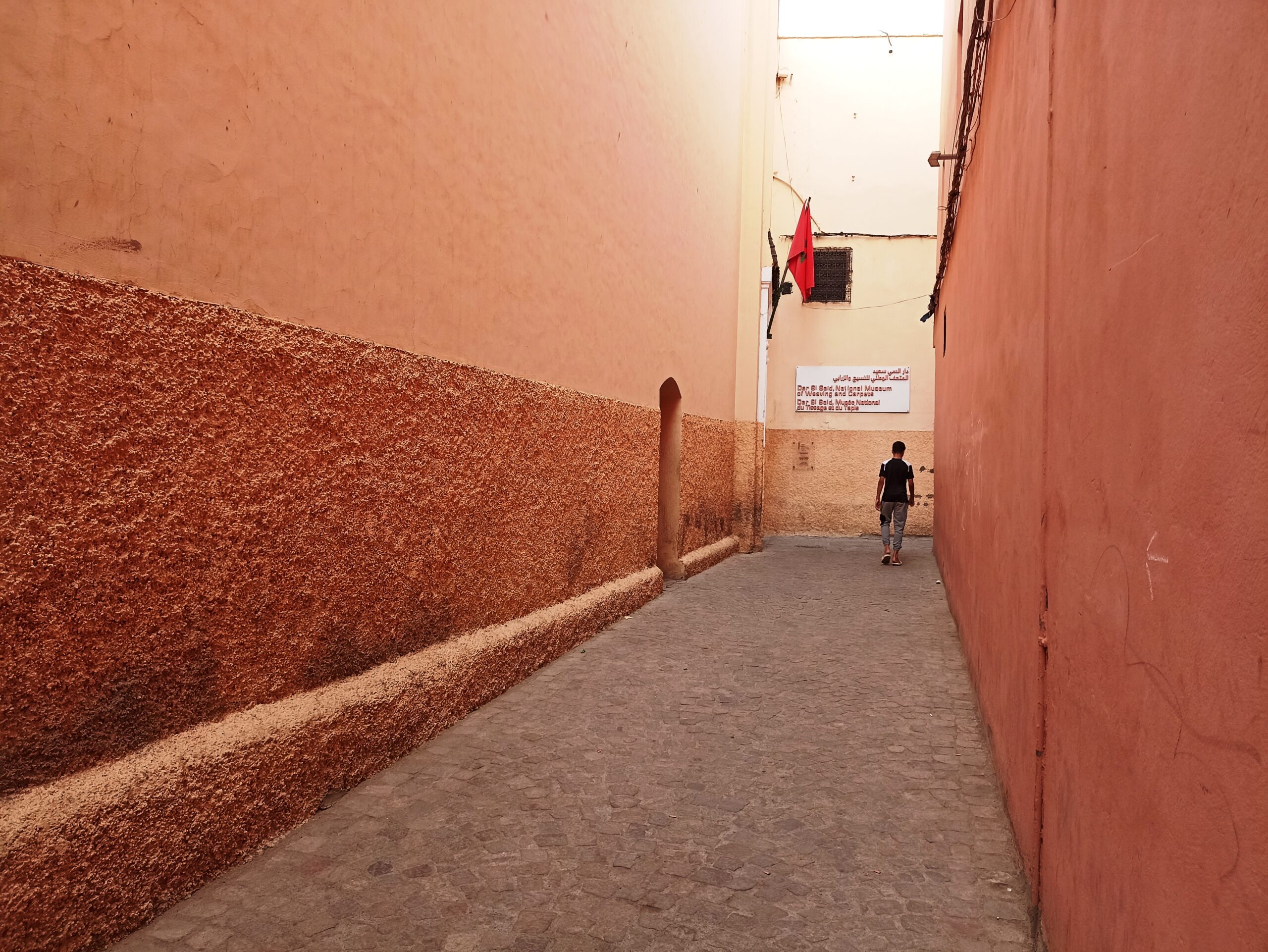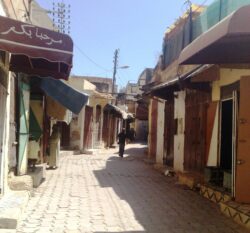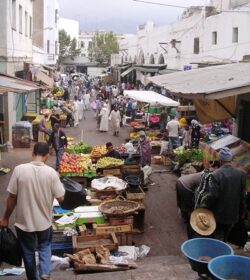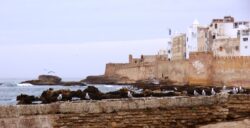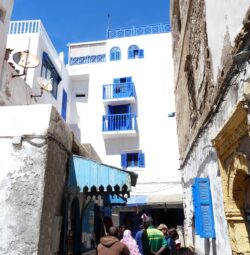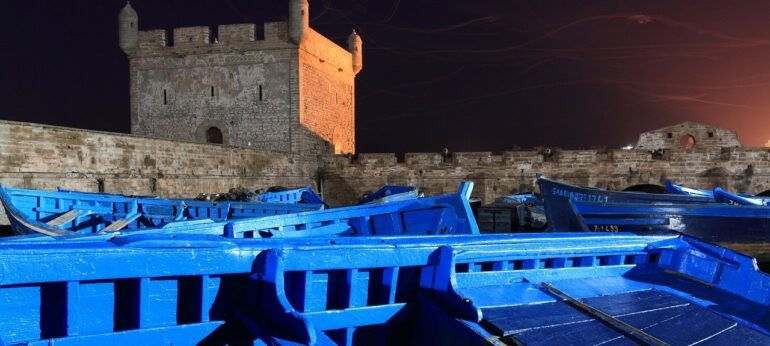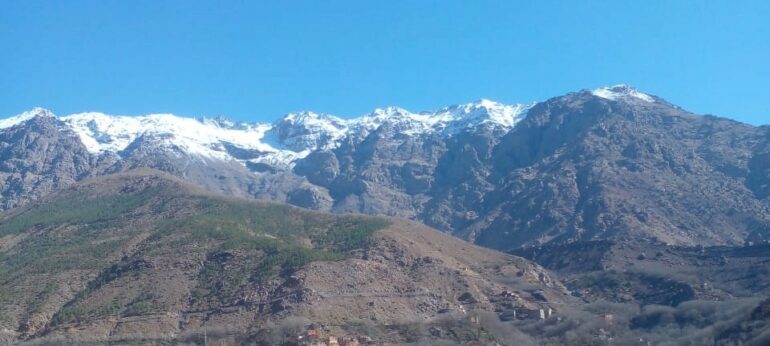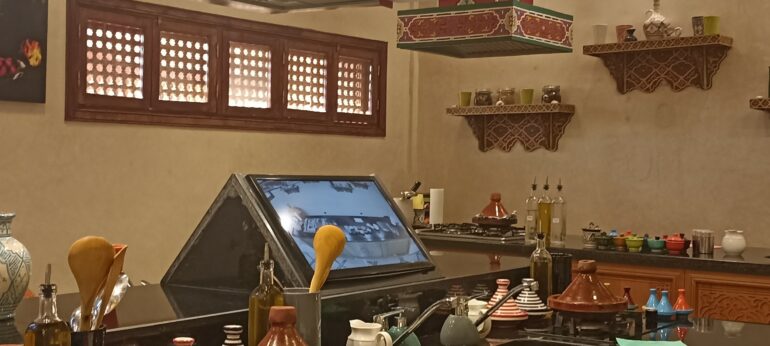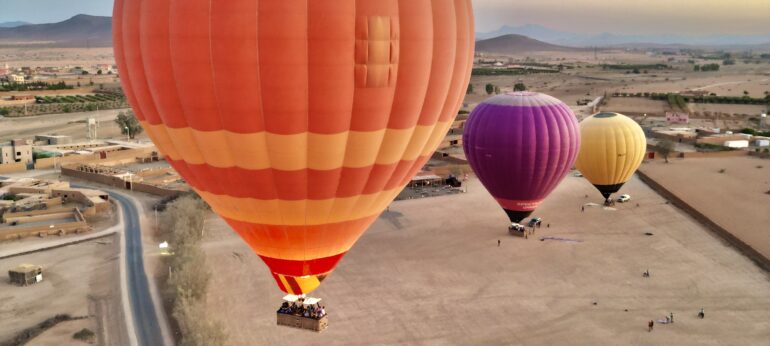WHAT DOES MEDINA MEAN?
How could we define a medina? We could say it is just the ‘old town’, like the historic centres of most European cities.
But we would then forget the essential nature of this urban perimeter. The word medina comes from the name of Medina, a city in Saudi Arabia, where Muhammad was first accepted as the supreme Prophet from Allah and where his tomb is located. Referring to the Prophet a medina is the ideal place and the ‘city’, par excellence. It is therefore organized as a fundamental expression of Islamic beliefs.
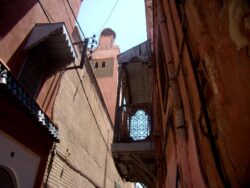
MAP OF A MEDINA
Historically, most medinas are walled. The ramparts protect from the outside world, from the rural world and from nomads who are assumed less subject to religious law. Only those who have been allowed can walk through the doors
A medina is divided into districts. Each district has its mosque, its madrasah (Koranic school), its hammam, and a public oven.
Each district is a stone of the common building.
The impression of a totally disorganized and chaotic world we can feel when getting lost in a maze of alleys is an illusion. Geographic areas are actually well organized according to the lifestyles and needs of the inhabitants.
In the center of the medina food markets can be found. In the past the Centre also housed the Caravanserais (foundouks) where the traveling merchants could not only rest and recover from their journey but also make lucrative deals.
Precious goods such as spices, jewelry, fine fabrics, religious items, rugs, books would be purchased. In the outskirts, the less noble activities like tannery, pottery and blacksmithing are gathered.
The Kasbah is the seat of Political power.
Private personal territory is hidden behind high walls and only the decorative doors allow to guess if a humble home or a sumptuous Riad lies beyond them.
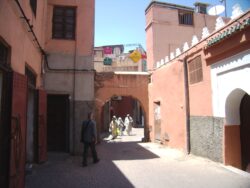
WORLD HERITAGE
Fortunately, the medinas in Morocco were fairly well preserved. During the Protectorate, noticeably thanks to Marshal Lyautey, they were saved from radical changes and extinction by the construction of more modern cities. Aware of their architectural beauty, he wished to avoid hazardous urban developments, and therefore leave them follow their own evolution.
In fact, for centuries most medinas have been keeping their first appearance.
Five Moroccan medinas are inscribed on the list of Unesco World Heritage sites.
FEZ
The largest medina in Morocco. The chapters of its long history of more than ten centuries can be read on every street corner. It is often considered as the best preserved medina of the Arab and Muslim world. Strolling in its labyrinth one realizes its cultural supremacy and influence. Its universities (Al Quaraouiyine University) its mosques, its magnificent palaces, its doors and its emblematic squares bear witness of its prestigious destiny as a former capital city. The refined decorative arts in the Fassi houses fit the magnificence of the city. Fez is also a crossroads of Andalusian, Oriental and African influences. Activity is still vibrant and one can still imagine the life of the thriving medieval city.
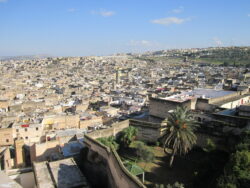
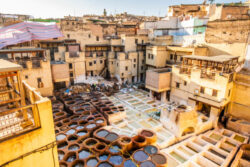
MEKNES
A few kilometers from Fez, the masterful gate Bab Mansour, one of the most beautiful in the world, opens on the Imperial City of Meknes. Walls, reaching up to 15 meters high, surround and define a monumental territory composed with a Kasbah and a medina. The city-palace, designed in the 18th century by the Alaouite Sultan Moulay Ismail, offers gardens, colonnades, a mausoleum, water basins, mosques, grain stores, old jails and horse stables, combining a sophisticated Moorish style ad an elegant rusticity. The medina which cannot architecturally compete with the Royal enclosure, has kept a hectic life with its picturesque market. In the evening, on the square El Hedim along the walls, the jugglers, storytellers and the fire breathers perform their best numbers.
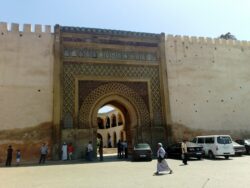
TETOUAN
This small walled medina is accessible through its seven gates. Built by the Spanish refugees, it remarkably reflects the link between Morocco and Andalusia. Located at the foot of the Rif mountains, Tetouan was a meeting place between these two civilizations but also between the two continents, Europe and Africa.
During the 17th and 18th centuries the city expanded widely, becoming an important harbor on the Mediterranean coast. Well preserved, with few outside influences, its urban layout, the various monuments, its houses, its shopping areas and little squares seem intact.
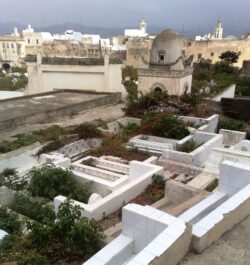
ESSAOUIRA
The medina dates only from the 18th century. Its construction was decided by the Sultan Alawi Sidi Mohamed Ben Abdallah (1757-1790) who commissioned a French architect, very much influenced by the style of Vauban to build this fortified city and embellish a small royal harbor. Mogador-Essaouira will be a crucial maritime crossroads to develop trade between sub-Saharan Africa and Europe.
Despite the permanent attacks of the salted sea waves and the winds, the city is remarkably preserved.
Its inhabitants of various origins (Berber, Arab, African, Jewish Spanish, European) lived in perfect harmony, respecting each other’s customs and religions. This melting pot can still be seen in the architecture, the monuments, and the decorative elements of this city.
The Ocean and its squawking seagulls, the still active fishing harbor add an irresistible charm to the city of winds.
Letting the soft breeze caress their cheeks, lovers always enjoy a romantic weekend there.
MARRAKESH
Last but not least, the Marrakech medina!
Yes, Marrakech Medina continues to exert a powerful and somehow universal fascination.
It is like an outdoor museum that offers its crenellated ramparts, its numerous monuments dating back to the Almohad dynasty (1147-1269), its monumental gates, its green gardens, its amazing palaces and riads, a spectacular Ben Youssef madrasah, so many mosques and minarets, the splendid Bahia Palace, the Dar Si Saïd Palace and Museum, the Saadian tombs…
But Marrakech wouldn’t be Marrakech without many other assets.
Let’s talk about the breathtaking beauty of its natural site when proud palm trees dance at the feet of the snowy Atlas Mountains. Let’s talk about the permanent and cheerful theater show that animates the indescribable Jemaa El Fna square, the beating heart of the city. Let’s talk about its colorful and overflowing souks, where trade and bargaining can make one feel dizzy.
Finally let’s talk about those who are the soul, the smile and the contagious energy of the medina: its inhabitants, the Marrakchis.
They could be the only motive for a visit of this vibrating medina.
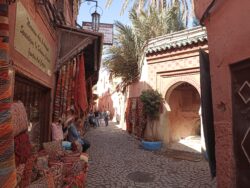
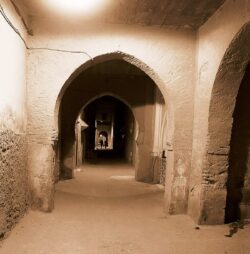
To these five emblematic medinas of a country, still so authentic, we could add many more…In recent years, many houses and riads have been restored. This new impetus created greater awareness of the need to value a rich patrimony and the ancestral cultural heritage. It also generated a revival of traditional craftsmanship. No one complains!
